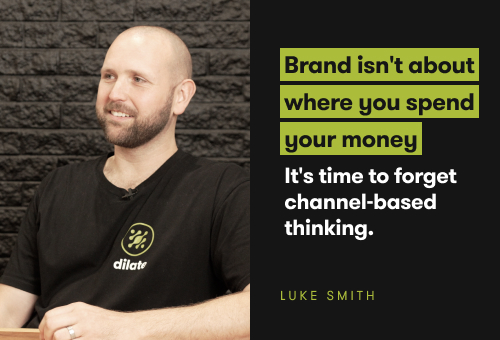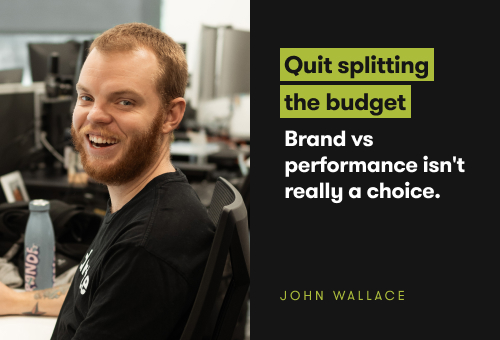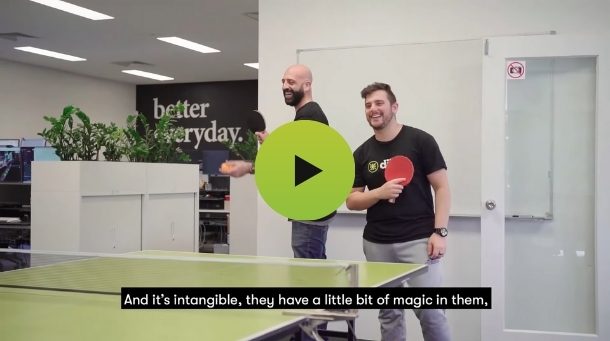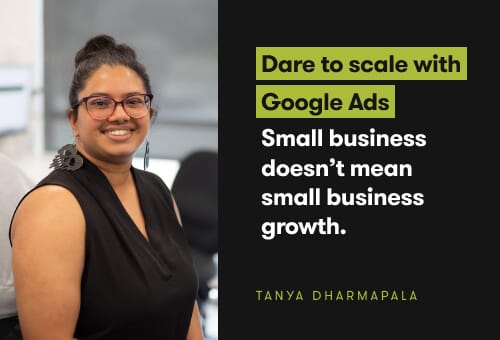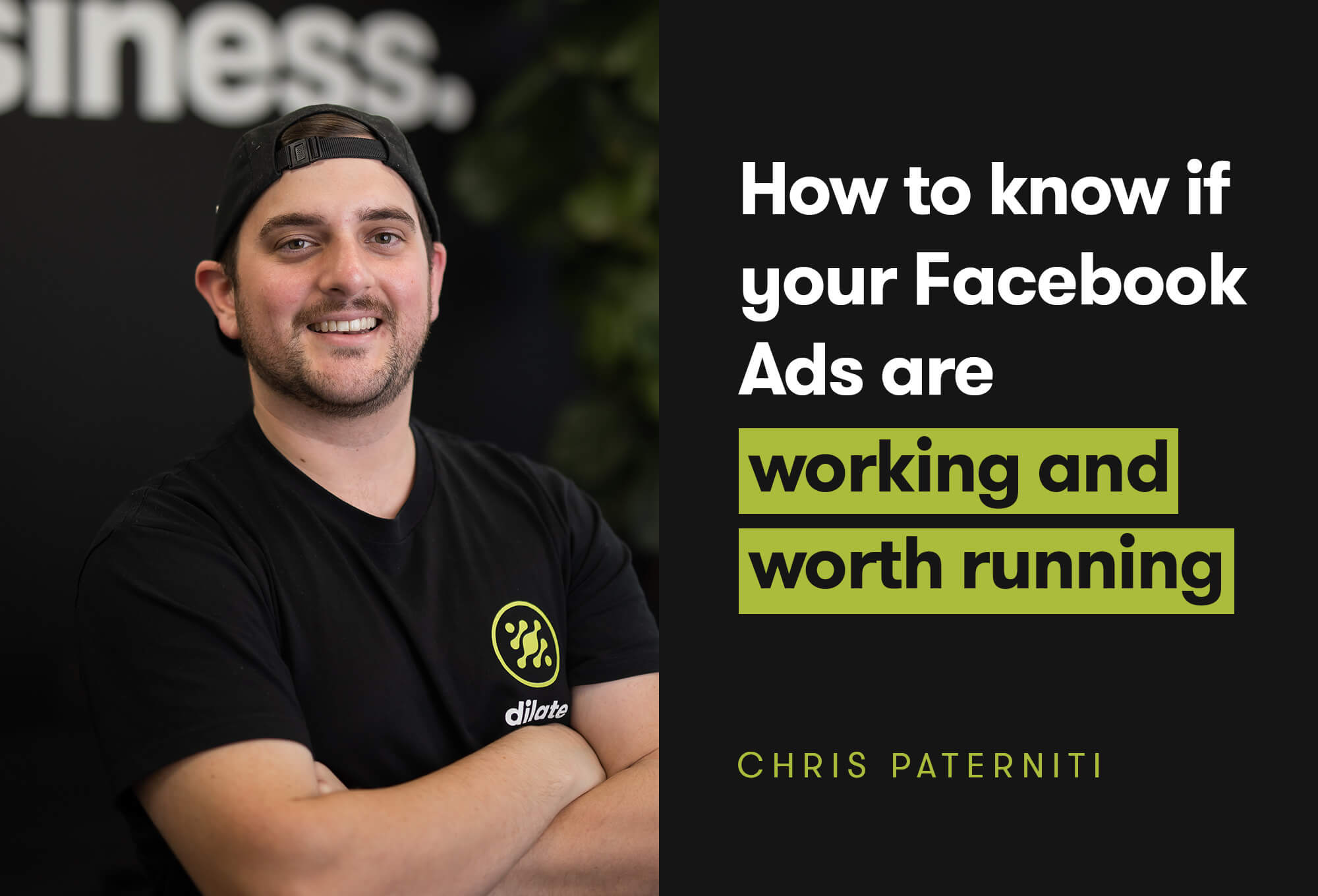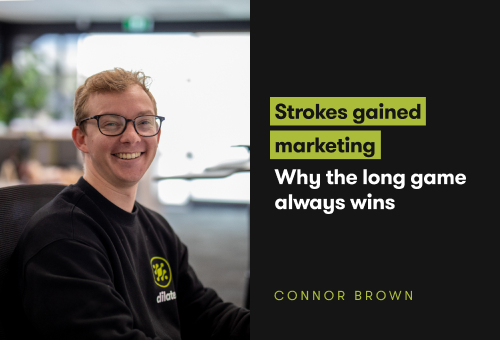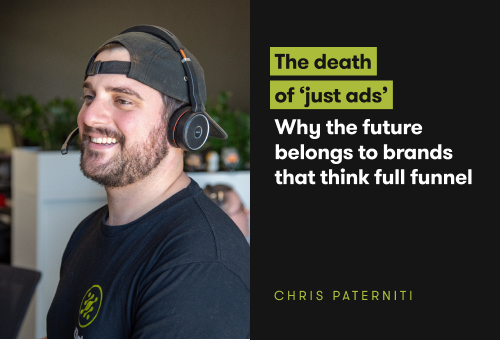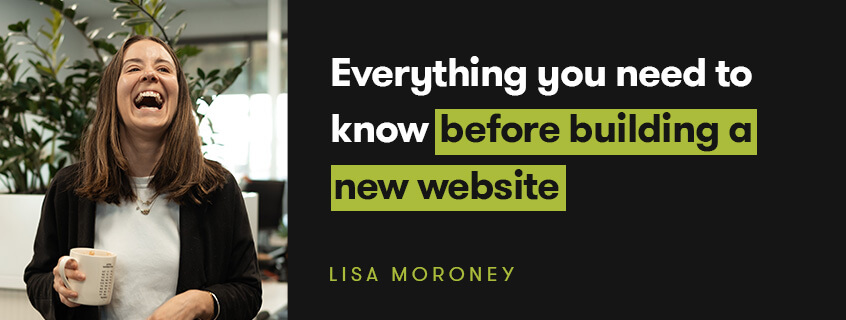
Everything you need to know before building a new website

In today's digital world, your website is crucial to your brand’s online presence. As a business owner or even as a marketing manager, having a well-built, well-designed and user-friendly website has a strong impact on how you appear online, and how visitors experience your brand. But, building a website has many parts to it, just like building and maintaining a house.
Like building a house, there are many things you need to know before building a website, common mistakes to avoid, steps to take, and having a clear checklist of things to look for. Knowing this in advance will help you to choose the best provider to deliver your goals. Here is everything you need to know before building a new website.
Common Website Build Challenges and Mistakes to Avoid
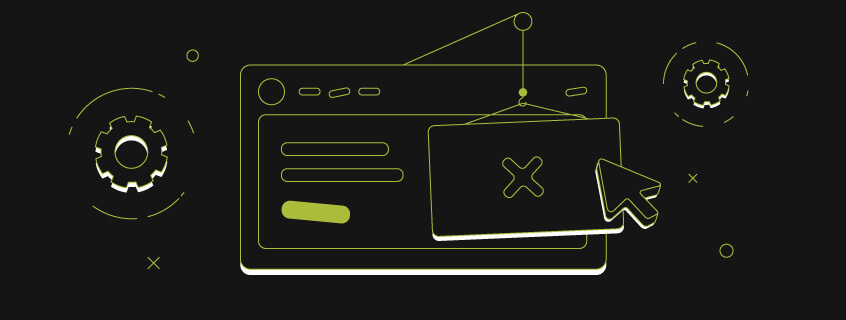
Because of how complex it can get when it comes to building websites, business owners and marketing managers can run into all sorts of different problems. These challenges can range from technical issues to strategic hurdles. Whether it’s because of misinformation or general lack of knowledge, some assumptions around how websites might be built can look like:
Building the website for your business
When building a website, many people think that it is being built for the business. But, that's not completely true. Yes, you want your website to feed you leads or sales, process transactions safely, and collect data accurately so that your business can then reach online audiences as if they were in person. The reality though is that websites are used by your potential future clients and customers, and as such, are who your new website is built for.
Proper planning is key:
- Do you understand your customer and are they your actual customer, or desired customer?
- Do you know how your brand talks and “feels” to communicate this the same way online, as you do offline?
- What do you want to communicate to users visiting your website?
- How do you want their experience to be with your website?
- How are you going to position your brand to your ideal audience and speak to their pain points, objections and desires?
This all comes into play so that the journey a potential customer takes on your website is as easy as possible and enables them to make a decision and act on it.
Not maintaining the website once they’re built
Just like a house needs maintaining every now and then, so does your website. Whether it’s repairing the plumbing, or simply updating the electrical wiring, a website works much the same. It needs a maintenance plan to ensure it’s performing to its full potential.
In order to do this:
- Ensure the latest updates and features are being used on your website. That is for items such as plugins, themes, or the core CMS version itself (e.g. WordPress).
- Ensure any Apps or Plugins being used are kept secure and updated by the third-party companies who built them.
- Remain up to date on changes in Search Engine and other system algorithms. This also includes staying up to date on integrations in your site like a CRM or Inventory Management System.
- Continue to learn and understand how customers interact with your website, through data such as Google Analytics - allowing yourself and your site to be flexible to answer to that data.
- Consider how your website best supports other business touchpoints. Such as dedicated landing pages that mirror your campaign messages, driving users to a dedicated page that mirrors a print or offline ad etc.
Not including websites as a core part of the overall marketing strategy
For most businesses, customers will either make a booking or make a purchase directly from the website. To maximise results, ensuring your website is the backbone of your marketing strategy is a must. At the end of the day - most online marketing leads users back to your website. This is where you have a small window to ensure what that ad said and promised, is what your website says and promises. Or, you risk losing the user altogether.
Your website is the conduit to sell your services or products to your customers, and as such your website is actually the most valuable tool in your online marketing toolkit, allowing you to attract, engage and retain your target audience.
Things to consider to ensure your website is the heart of your marketing tool kit:
- How you speak, the tone you take, and how your brand is perceived consistently on your website, in offline and online marketing collateral including social media, and how you would speak to a customer in person? you’re appearing offline, or on other social platforms like Facebook and Instagram
- Have you considered the needs of your users and the website, to ensure users can find quickly and easily (i.e. no roadblocks) the information they need.
Thinking the saying ‘what you get is what you pay for’ doesn’t apply for websites
Creating a good website comes with costs, creating a free website comes with issues.
When building a website, there are costs involved to deliver functionality, because there are different components that go into making up a website. These include:
- SEO Mapping and Research; ensuring the terminology and words you use on your site marry those of your audiences, as well as ensuring each page is set up strong from the start to rank for those keywords.
- Information Architecture; knowing the overall sitemap and structure of your website and how each of those pages will interact with one another for the best user journey and experience.
- Content; how it will read, what it will say and how it will reflect your brand.
- The Design elements, considering best UI and UX, latest trends and data on how users engage with design and websites.
- The Development and main functionalities; ensuring it is smooth, fast and light, as well as easily edited and maintained ongoing.
- Hosting; once the site is live, where will this live and who will host it. This plays an important part and also impacts your website speed and SEO.
- Continued maintenance and upkeep of the site and its functionality post-launch.
Before you start, it's recommended to have a budget in mind.
Having unclear website objectives
If your answer to wanting a website is ‘because other people have one’, you wouldn’t be the only business-owner thinking this way.
While we are moving more and more into a digital-based world, there is still the need to question if a website is right for your business and if yes, what that looks like for you.
Having clear objectives for your website, based on your business needs will aid in the process and ensure a much smoother experience. Without a defined purpose, the website won’t align with your existing marketing objectives, and ultimately be confusing for the user experience, which no one wants.
Plan your website objectives. What do you want your website to do and when do you want to achieve these goals? Examples of website objectives include:
- Sell X amount of products, collect X amount of inquiries, collect X amount of emails, etc.
- Generate better brand awareness and online presence
- Increase CTR, website traffic and page visits
- Leverage important keywords with high search volume to improve your organic SEO rankings
Not building them to be mobile friendly
In today's world where content is consumed from mobile more than a computer, optimising the website for various screen sizes is a must. Now, optimising websites to be mobile friendly is an important and necessary part of a website build. Your web designer and developers will know how to consider this from design through to build. If building your website to be mobile friendly isn’t included in the web build process, then you risk losing a large amount of visitors who might find your business on their phone.
Things to consider for mobile:
- Consider how you yourself interact differently with a website on mobile v’s desktop. You need the navigation to be sticky so it’s accessible at all times, you want the site to load fast and to easily find, or be guided, to the next step.
- Look at your design treatment and if you need to adjust how some content is displayed on mobile v’s computer.
- If your site is an eCommerce website, most people will be shopping from their phone - so consider the phone first. Something as simple as including plugins like Apple Pay, Shop App Pay or Wishlist Functionality can make customers happy with the shopping experience.
Not having a strategic content plan
Anyone can write content for a website, but the key part is the strategy and planning before you even put pen to paper.
The goal of every piece of content on your site is to ensure it delivers value to your users, is easily digestible by them and also, ensures that search engines, such as Google, notice the website and rank your website for the terms you want. This requires work and a SEO strategy that can include:
- Finding and mapping relevant keywords and phrases that people search for (keyword research) against each of your primary pages;
- Making the website look appealing for search engines (on-page optimisation) while also ensuring it is written for humans;
- Building you prevalent links from from other websites (link building) s well as ensuring your internal linking throughout your site is setup; and
- Keeping up with ever-changing search engine algorithms, which is the role of an SEO Manager, in collaboration with front-end developers.
Things to think about before building a new website

The reason for needing a new website
Many new businesses assume that they need a website just for the sake of having one. While it's true that having a website is absolutely critical for business in the modern era, you still need to carefully consider what you want your website to do. Is it for giving information to your potential customers? Is it for driving sales or inquiry? Do you plan to sell products directly to consumers through your website, or attract potential retailers? Is it B2B or B2C?
When you identify the reasons why you need a website, consider what the ideal outcome is of building one—what do you want to get from this investment? Your website is a digital asset. So it’s important to treat a website build as any other physical asset that your business invests in.
Establishing your brand identity
Having a clear understanding of your brand identity ensures that you are positioning your brand where you want it to be in the market. It’s not just about having a pretty logo and cool color scheme. It’s about creating a consistent, trustworthy and memorable online presence that resonates with your ideal target audiences. Good branding is important for several reasons:
- Clearer messaging on all your creative assets and website content
- Better competitive advantage in a noisier internet
- Longevity in an ever changing digital landscape
Essentially, you stand out better, give a reason for people to feel emotionally connected to your brand, and as trends change, your brand identity can still maintain its core essence. Consider investing some time into your brand identity, or partaking in brand strategy workshops so you can establish better branding for your website build.
Consider the process: Content, Design, Build
The website design and build is done once content is mapped and strategised. It’s not just about what it is that you want to say or your products that you're selling, but how you are actually going to write it and the tone of voice to match your branding.
From a marketing perspective, making sure that when a website is built that the content has been thoroughly considered and SEO has keyword mapping against it is crucial. Content that is well crafted around the keyword mapping will set you up for success when you launch.
Your website should be built to attract your customers or your clients. Focusing on what their needs are and what their hurdles are so that your website can talk to those pain points and objections, and talk to the solutions and desires that your business has to offer.
UX (User Experience) and UI (User Interface)
Making sure that the user journey throughout the site is seamless throughout the website, and takes users exactly to where they need to go. Customers that come through to the website each have a different journey in mind, so it is important to consider how these customers are finding you, and what page they are landing on, and making sure they are seeing the information they require or are easily able to search for information they need.
The idea is to keep them on the site to explain who you are as a business and connect with them a little bit more beyond that single page.
Think of UX and UI like a coffee cup. The way the coffee cup is designed is your UI - does it have a handle, is it double-layered for heat, does it have a lid etc. And then the UX is how you use that cup - does the lid leak so it’s bad UX, is the hand large enough for any user and is good UX?
UX and UI need to work together because alone, they do not make a great site.
Visitor Attention Span
When the human brain is scanning a site, it will scan it for three to five seconds to absorb and skim information. They're just picking up keywords that relate to their needs or problems, as they scroll down a page.
Then, typically, a user will choose to view the page from the bottom up - going back up to the section that is most related to them.
Once the user has identified the area of the site, service or product that they are most interested in, they then direct themselves [via obvious calls to action and links] to an internal page which gives them additional information on that specific service or product.
That's where the brain will then spend five seconds or more digesting the information and spending time reading it. This is when you have engaged the user and they are committing their time to learning more.
What you want to ensure here is that, if they get to the end of that and it's still not quite right or they're still questioning who you are as a business, or comparing you to a competitor, that we give them additional trust factors and continue to offer more relevant information until they reach the end goal or transaction.
Trust Factors
Trust factors help you deliver content to users that show you can be trusted as a business and also your product or service can be trusted.
With how overwhelming options can be for users online, it’s important to feed these additional trust factors to users in the right areas of the site, otherwise it can be seen as the opposite.
Some trust factors to consider include:
-
- Your USPS as a business: what you do differently or what you do better than your competitors - focusing on what issues your customers have and how you can solve those for them.
- Blogs: to establish your business as a leader in your industry, or at least a knowledge centre, blogs help you gain authority on a subject matter and develop trust from readers.
- About us: to put an identity on the business and create an emotional connection with the visitor helps users feel like they know you, digitally.
- Testimonials from existing customers: social proof psychology says that people are more likely to do what other people are doing. So by including testimonials on your website, you are showing new visitors proof that they can trust you.
Landing Pages for Paid Advertising
Your website helps communicate who you are as a business, your products or services and also other areas like Blogs or Projects.
What you also need to consider is how your primary online business tool [your website] can server other platforms and marketing campaigns.
Ensuring your website also has dedicated and relevant landing pages to server your marketing campaigns and strategies, not only helps your marketing results but also ensures a better user experience to a wider net of users.
Some key points to focus on for the best performing landing page are:
- Making sure content is optimised for what the ad campaign is targeting and the messaging it includes. Think of an ad you have clicked on and now imagine being sent to a page that doesn’t align or speak about the same message - it can be focusing and you would likely leave. So you want to ensure the message is consistent across all related touchpoints.
- Page speed impacts paid advertising performance as well. With Google's algorithm looking at slow landing pages, if your site and landing page is fast and optimised for speed, then Google will favour this.
- Brand aligned content and making sure that even on that landing page, visitors understand what the business offers, who they are as a brand, and can clearly differentiate themselves from competitors.
Are you ready to build your new website?

If you already have a website but are considering building a new one, here’s our Website Build and Design Checklist to help you see what you already have, what you need and what to do moving forward!
Need a hand?

Building a new website is an exciting and rewarding journey for business owners.
By following this comprehensive guide and taking into account all the essential aspects, you can create a powerful online platform that drives business growth, engages customers, and leaves a lasting impression on your target audience. Remember that a website build and design is not a one-time project but an ongoing project that requires constant updates and optimisations to stay relevant in a rapidly evolving digital landscape. At Dilate, we invest time, effort, and resources wisely to craft a website that truly represents your brand and fulfils your business objectives. So let’s talk!

